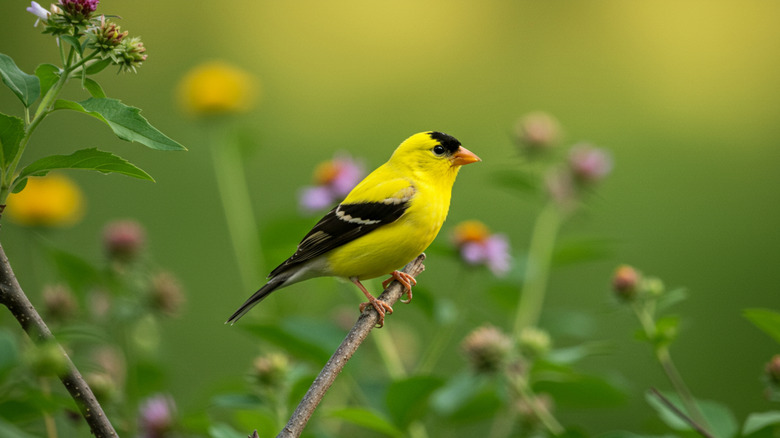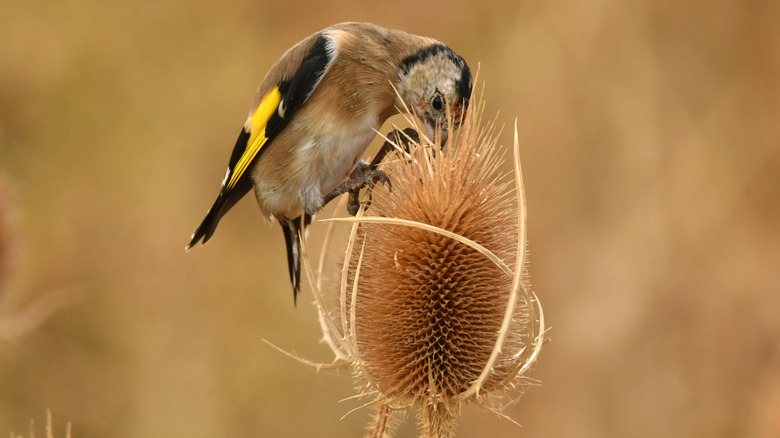Plant This Spiky Flower In The Fall To Attract Goldfinches Next Spring
You don't need to be an avid bird watcher to enjoy seeing an American goldfinch in your backyard. The brilliant yellow birds are a delight to observe with their bouncy flying habits and joyful songs and calls. With so much to love, you're probably wondering if there are any helpful tips and tricks to attract more goldfinches to your yard. Lucky for you, there are plenty. One of the easiest steps you can take is to plant some native thistle (Cirsium sp.) in your garden.
Of all the plants that will have goldfinches flocking to your yard, thistle is great because the birds can use it both as a food source and for nesting materials. American goldfinches time their breeding around the blooming of thistle, which is why they often have a later breeding season than other birds. You'll need to be careful when choosing a type of thistle to plant, as many species can be invasive. For example, you'll need to act fast if invasive bull thistle pops up in your yard, but species like Flodman's thistle (Cirsium flodmanii) should be fine.
Thistle seeds are an important food for goldfinches
Goldfinches love eating thistle seeds, and if you have a bird feeder, you can fill it with store-bought dark black thistle seeds and call it a day. However, because other parts of the plant are used for goldfinch nests, it's better if you can grow thistle plants in your yard or garden instead. Flodman's thistle is a good choice because it's native to the United States and Canada and won't completely invade your yard like other species. The plant features a reddish-purple bloom with spike-shaped petals. They typically bloom in the summer and are often considered short-lived perennials.
Hardy in USDA Hardiness Zones 3 through 7, Flodman's thistle prefers an environment with partial to full sun and well-drained sandy soil. Loam and other soil types are also suitable, as the plant is not that picky. You can grow Flodman's thistle from seed or by dividing mature thistles and transplanting them in your yard. Either way, fall is the season to get planting if you want to set up your yard to be a goldfinch dream destination come springtime. To promote better flowers and (hopefully) attract more birds, regularly pruning your thistle plant is also advised. Other thistle species that are non-invasive and ideal for attracting these vibrant little birds include field thistle (Cirsium discolor) and wavyleaf thistle (Cirsium undulatum).

